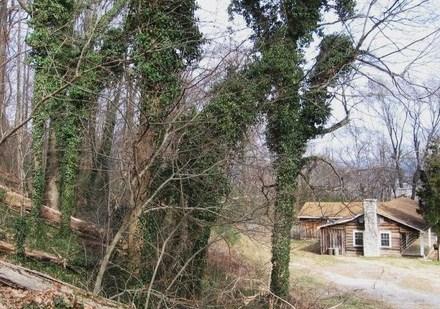All of the information you need to identify Mystery Plant #9 is in this rhyme:
Oxford and Cambridge, Brown and Yale.
Country and colleges, these tell the tale.
Here is how to put it together:
Oxford and Cambridge are English universities (the two oldest in England, to put a finer point on it). Brown and Yale are Ivy League universities. Putting "country and colleges" together, you get "English Ivy."
The Rest of the Story
English Ivy (Hedera helix L) goes by a variety of names, including common ivy, branching ivy, glacier ivy, needlepoint ivy, sweetheart ivy, and ivy. No matter what you call it, this evergreen vine is both loved and hated.
The native range of Hedera helix is Europe, western Asia, and northern Africa. It was apparently intentionally introduced to the United States by European immigrants and is now widely grown as an ornamental plant and ground cover, and to attract wildlife with its berries and dense foliage.
It's not hard to understand why homeowners and landscapers often choose English ivy for "difficult" sites and in situations where low maintenance is essential. This plant is a good looking evergreen that grows quickly in a wide range of soils, tolerates cold very well, is disease-resistant, and requires little attention. Once you get it established, you can pretty much leave it alone.
Unfortunately, there are some places where you can't just leave this plant alone. It has a dark side, so to speak. It is an invader. While it's a bit extreme to liken English ivy to kudzu ("the plant that ate the South"), there is no doubt that this is a problem plant whose hardiness and dispersion creates serious problems on a widespread basis. It is not at all extreme to call it a noxious weed.
Spread primarily by birds who eat the dark purple or black berries and poop out the seeds, English ivy can now be found in many natural areas, especially woodlands, open areas, and the edges of farm fields, meadows, salt marshes, and disturbed areas. It often moves in after fires, storms, logging or other natural events or human activities have thrown open the forest canopy and allowed sunlight to flood through.
The diffusion to natural areas has occurred on a geographically widespread basis, especially in the Middle Atlantic states, the Southeast, the Midwest, and the Pacific Coast states. This hardy plant is now considered invasive in at least 18 states and the District of Columbia. Among the National Park System units battling this pest are National Capital Parks-East and the National Mall, the Appalachian National Scenic Trail, Great Smoky Mountains National Park, Mammoth Cave National Park, Redwood National and State Parks, and Olympic National Park, to name just a few.
When English ivy takes hold in natural areas or other places it isn't wanted, some very bad things can happen. When it spreads as ground cover, the vigorously growing plant can overwhelm and smother native vegetation and ornamental plantings. Developing as a vine, which is something it does only when growing on things protruding upward from the ground, English ivy climbs into trees and on other surfaces (even brick walls) that reach for the sun.
Trees infested with English ivy are not infrequently killed because the ivy blocks light and kills them, branch by branch, beginning at the bottom and moving toward the top. The added weight of the ivy vines and leaves can also make the tree more vulnerable to toppling in storms and snowfalls. English ivy infestation even worsens the risk of disease damage, since it is a reservoir for bacterial leaf scorch (Xylella fastidiosa), a pathogen harmful to elms, oaks, maples, and some other native trees.
The National Park Service and other land managers who must deal with English ivy infestations are faced with a difficult, but not impossible task. Although there are no effective biological controls for English ivy, it can be killed or removed with various manual, mechanical, and chemical control methods. Since re-infestation routinely occurs, it's a potentially endless struggle.
Postscript: The leaves, stems, and vines of poison ivy and English ivy are similar enough in appearance to confuse many people at least some of the time. English ivy leaves have hairy stems not unlike those of poison ivy. The vines of both plants can be very thick, and while English ivy most commonly has five-lobed leaves, it can also have three-lobed leaves like poison ivy does. If you're not certain what you are dealing with, you need to err on the conservative side and proceed with due caution.




Add comment